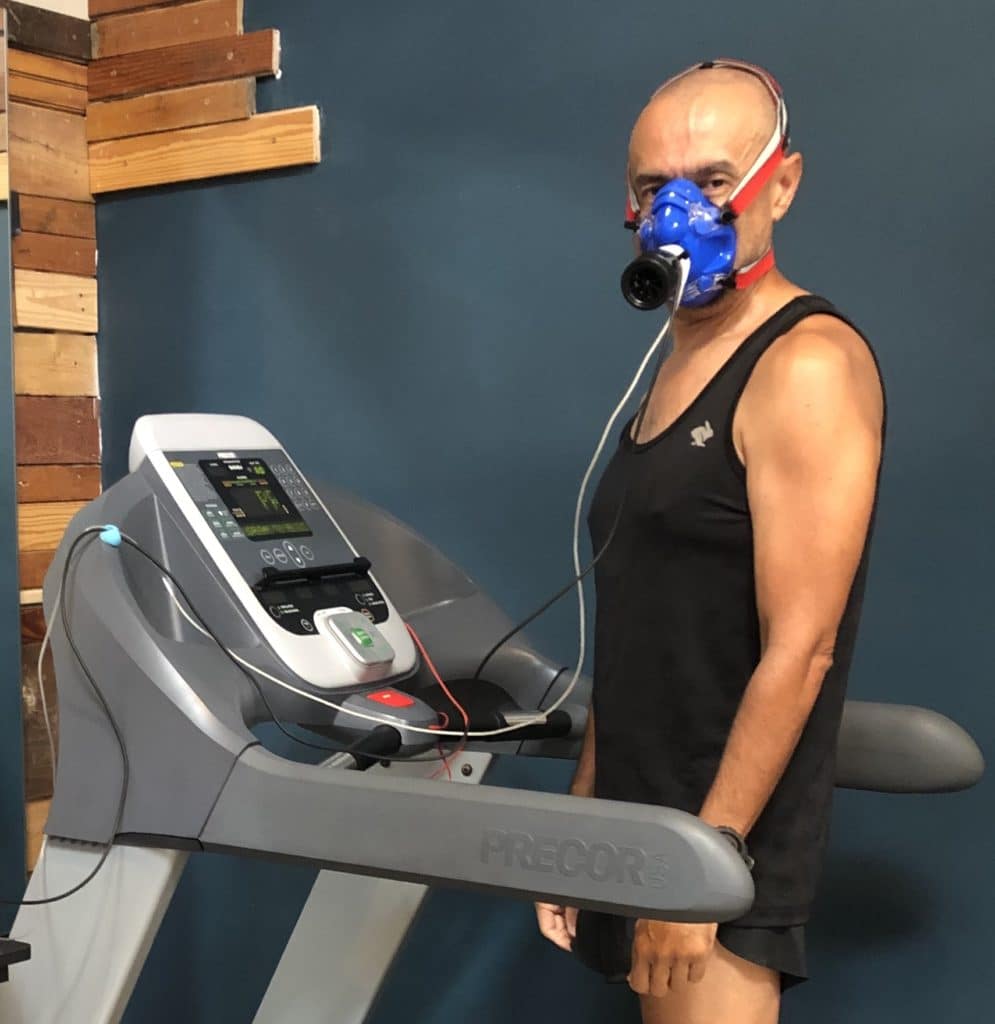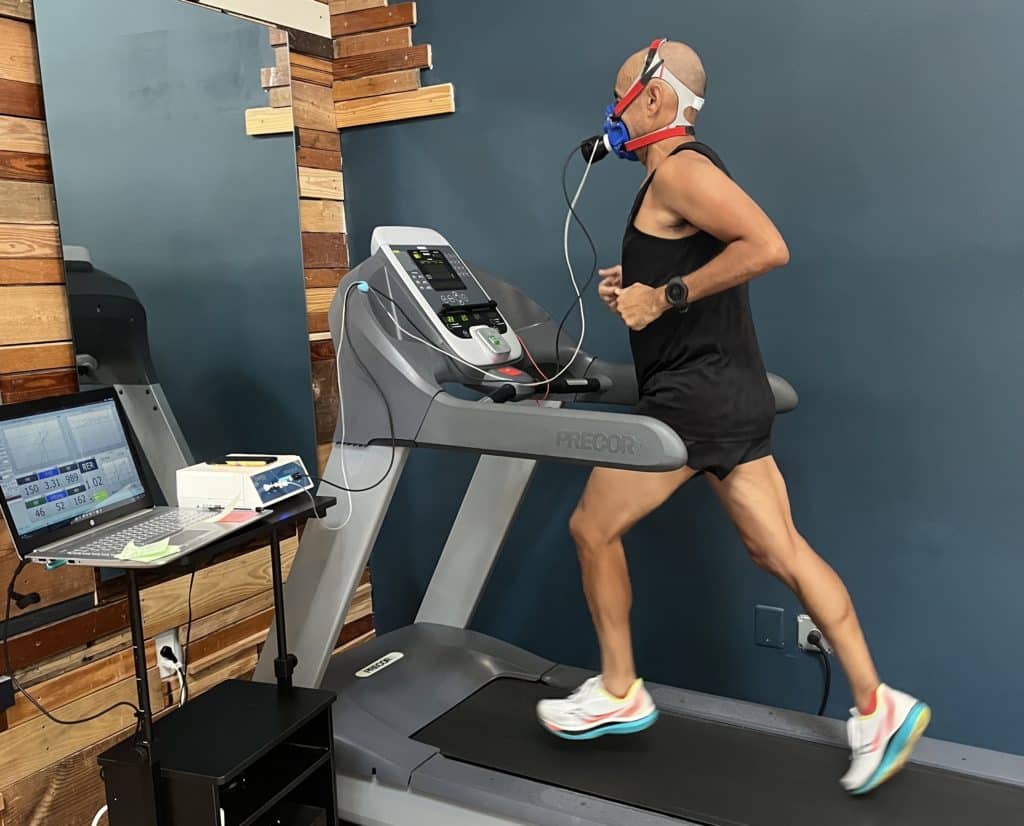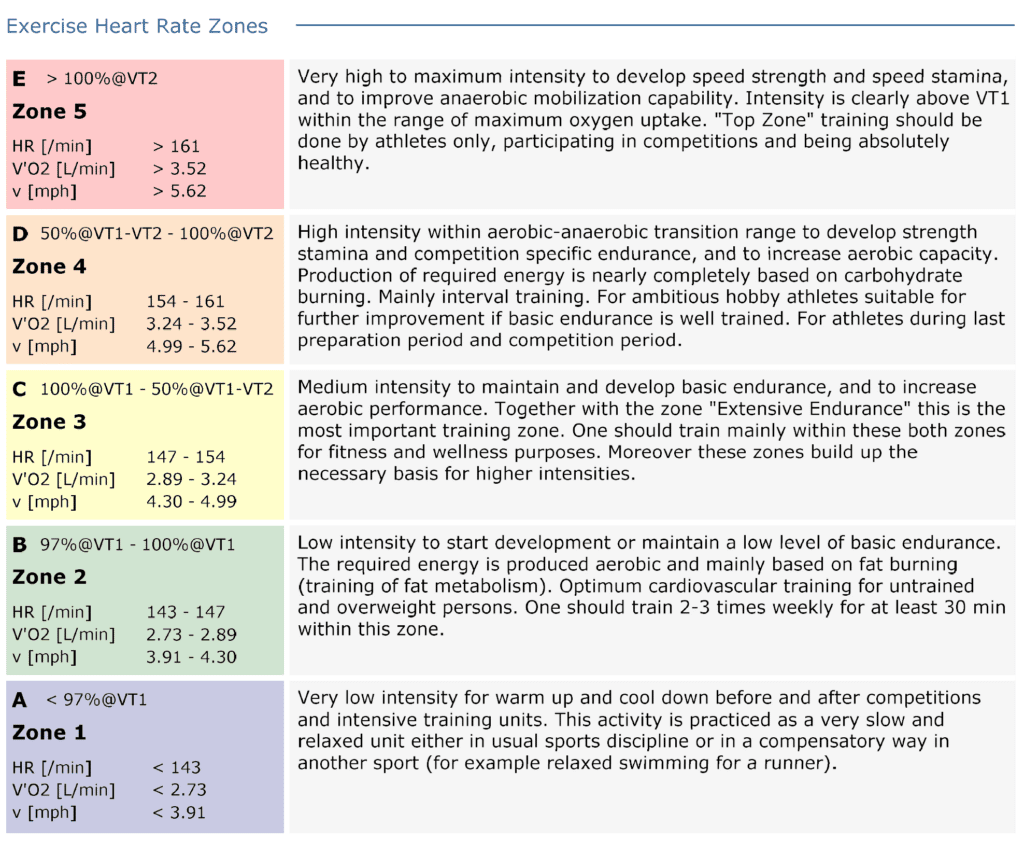A VO2 Max test details how much oxygen is used during exercise and determines the maximum oxygen you can consume during exercise. The test has been available for decades and has been widely used by highly competitive and professional athletes, so how would an average person benefit from taking a VO2 Max test?
by Dave “D2” Martinez
I’m not a competitive athlete and certainly have no aspirations of being a professional athlete either. At 52, I’m past my prime and I don’t think I have the genetic makeup even if I had started earlier. Despite that, I had an opportunity to take the test through our friends at Precision Performance and Physical Therapy. They have recently started offering this service and needed some test subjects and while I’m not a professional athlete, I can definitely be a guinea pig while learning some new things about myself.
In the past when I was a bit more serious about training and doing triathlons, I had done a Running Threshold Test and even a Functional Threshold Power Test on a bike (did one a few months ago through Zwift). Neither of those tests was pleasant and they require a certain amount of suffering, so I kind of knew what to expect but was still a bit anxious.
The VO2 Max Test
Everyone at Precision Performance was great and eased any concerns I had. Dr. Kate Mihevc Edwards and I caught up since the last time she was on our podcast and gave me a brief explanation of what to expect. Dr. Allison Jones performed the VO2 Max test and she provided me with a detailed explanation of the whole process so I felt comfortable going into the test. The equipment used is very specific, highly accurate, and also expensive. The one piece that measures your oxygen is $1,000 so it’s a very expensive part if it breaks. I was given a wireless heart rate strap to wear in addition to the mask that needs to be airtight for the results to be accurate.
I either looked like Darth Vader or Bane from Batman with the mask and the straps that held the mask on. There were different size masks and I would say they’re not the most comfortable for a few reasons. Even though you’re breathing and your airflow isn’t being restricted, it’s weird running at a high intensity while your mouth and nose are covered. The other reason that makes it a little uncomfortable is that your view is partially blocked because of the mask. If you want to see the floor of the treadmill or see the sides of the treadmill when it’s time to step off, you have to move your entire head to look down, you can’t just shift your eyes.
We first go through and make sure everything is working properly by starting the treadmill and slowly increasing the speed until my heart rate reaches 110 BPM. This also gives us a base to start the test. Once the test starts, the pace is increased every few minutes. It’s been almost 2 months since I took the test and I don’t remember exactly but I think I maintained a pace for 3 minutes and then it would be increased. Towards the end, the 3-minute intervals felt like 10. I had to run as long as could or at least until Dr. Allison gave me the okay that she had enough data to complete the test. I got the okay and ran for a few more seconds. I wish I could have run longer but I was at the point where I couldn’t go any further at that pace.
VO2 Max Test Results
The following day I got the results emailed to me by Dr. Allison Jones with a detailed explanation of the results and what they meant. The file contained 13 pages worth of data, most of which would I wouldn’t understand or know how to apply without the aid of an experienced coach or medical professional. Dr. Allison provided a nice summary that made it easy for me to understand. The first part detailed information on Lipid/Fat Metabolism, which is the synthesis and degradation of lipids in cells, involving the breakdown or storage of fats for energy. The results showed that I have an effective lipid metabolism at a heart rate of 119-120 BPM. So if you’re looking at heart rate zones, this would be Zone 1 or a very easy run. I’ll dive deeper later into heart rate zones since the test helped determine those zones for me. Basically, at 120 BPM, I can burn fat more effectively for energy. This is also good to know for endurance events like an Ironman or Ultramarathon.
So what is my VO2 Max? I reached 55 ml/min/kg (milliliters/minute/kilogram). That number means absolutely nothing unless it’s put in context. Also, to be clear, while I’m sharing my results, the number should not be used to compare against others. The chart below is just a reference to judge my fitness based on my age and put it into context. Just to go over it again VO2 Max is the maximum amount of oxygen that a person can use during exercise and is an indicator of endurance potential. It correlates to the intensity of exercise that can be maintained for 5-8 minutes. From those of us that got tested the range varied from 54 – 68. The person that got 68 is in his early 20s and runs track for Georgia Tech. Which doesn’t make me feel so bad. But how does my VO2 Max test compare against the average person in my age group? I pulled the chart below from Garmin.com that had permission from The Cooper Institute®. For more information, go to www.CooperInstitute.org.
Typical VO2 Max Fitness Scores for Men by Age Group:
Typical VO2 Max Fitness Scores for Women by Age Group:
With a VO2 Max of 55, I’m above average for my age group (Males 50-59 – categorized as “Superior”). Actually, compared to the average male, my VO2 Max is on par with a male in the 20-29 age group (half my age). So I feel pretty good about myself right now. Remember, it’s not a competition and we’re not comparing. LOL!
There were a total of 13 pages worth of data that Dr. Allison Jones provided. Most of the data between pages 2-9 would be used by an experienced coach to develop a training program for a specific goal that is catered specifically to me. If I was looking to qualify for the Boston Marathon, for example, I’d hire a coach that could use this information to create a custom training plan for me. It would also provide some realistic expectations based on the data. My marathon PR is 3:55 and I need to run a 3:25 to qualify in my age group (probably 3:20 to actually get in). So I’d have to take 30 – 35 minutes off my time. My VO2 Max results would provide a coach with the information needed to create a training program that actually may need to be longer than the average marathon training cycle. At 52, taking 30 minutes off a marathon is no easy task, and may take a few marathons before I could actually do it and still not get injured.
Heart Rate Zones
The other part of the test that I’ll find the most useful is determining accurate heart rate zones for training. The image below shows my results and how to use them.
I reviewed these and adjusted the zone on my Garmin to more accurately reflect the zones that I’m training in. There is a generic calculation that can be done based on your age to determine your maximum heart rate and then use that number to calculate the zones based on the percentage of your max heart rate. I think that’s what I used and they were off. In some instances, the zone was off by a beat, and in others as much as 10 BPM. As I looked over my training on Garmin Connect and compared my new heart rate zones, most of my runs have had more time in Zone 2 and not in Zone 3 as was erroneously indicated. This would explain why my running has plateaued. I need to spend more time in Zone 3 if I want to increase my aerobic capacity and endurance. Having this information will help me train better and improve my performance.
Can VO2 Max Be Improved?
The answer is yes but it’s not easy. It requires High-Intensity Interval Training (HIIT). This is where a coach comes in or a very good training plan. In order to increase your VO2 Max, you have to push hard and increase the amount of oxygen you use. Of course, this takes time and like any good training program, it will require some days of max effort and others at an easy effort as well as rest days. Basically, if you follow a training plan, you’ll gradually improve your VO2 Max.
Is VO2 Max Testing For Everyone?
The simple answer is no. However, if you’re even remotely interested in improving your performance, you’ll need accurate data to do it right, then the answer is yes. Keep in mind that everyone is different and most training plans are designed to accommodate the widest range of people. The calculations I used to determine heart rate were off and had me training a little too easy. There are some great watches that can calculate relative VO2 Max and heart rates but they’re likely to be off. In some instances, they skew higher (which was the case in my heart rate zones). As someone that is starting out, some data even if it’s slightly off is better than none at all but if you’re serious about training and performance, accurate data will provide a better path to your goals.
While I don’t know of others in the Atlanta area that offers this test (I’m sure there are), based on my experience and the fact that everyone on the Precision Performance team is a runner and is active, I’d definitely recommend them. While I’ve never had any serious injury that required physical therapy, they would be my first choice.
I do have a few trail races on the calendar and I’ll definitely use this data as I prepare for those races. My goal is to stay healthy, and active. Racing allows me to enjoy the experience with others and enjoy being part of the running community. I came across this post on Twitter and loved it and thought I’d share it. I did get permission to use it. I hope I see you out on the road or trail.
Runner’s Blessing: That the miles behind us, make us stronger, braver and kinder. And the miles ahead of us, keep us humble and thankful.
Colleen @runhappy72 (Twitter)







